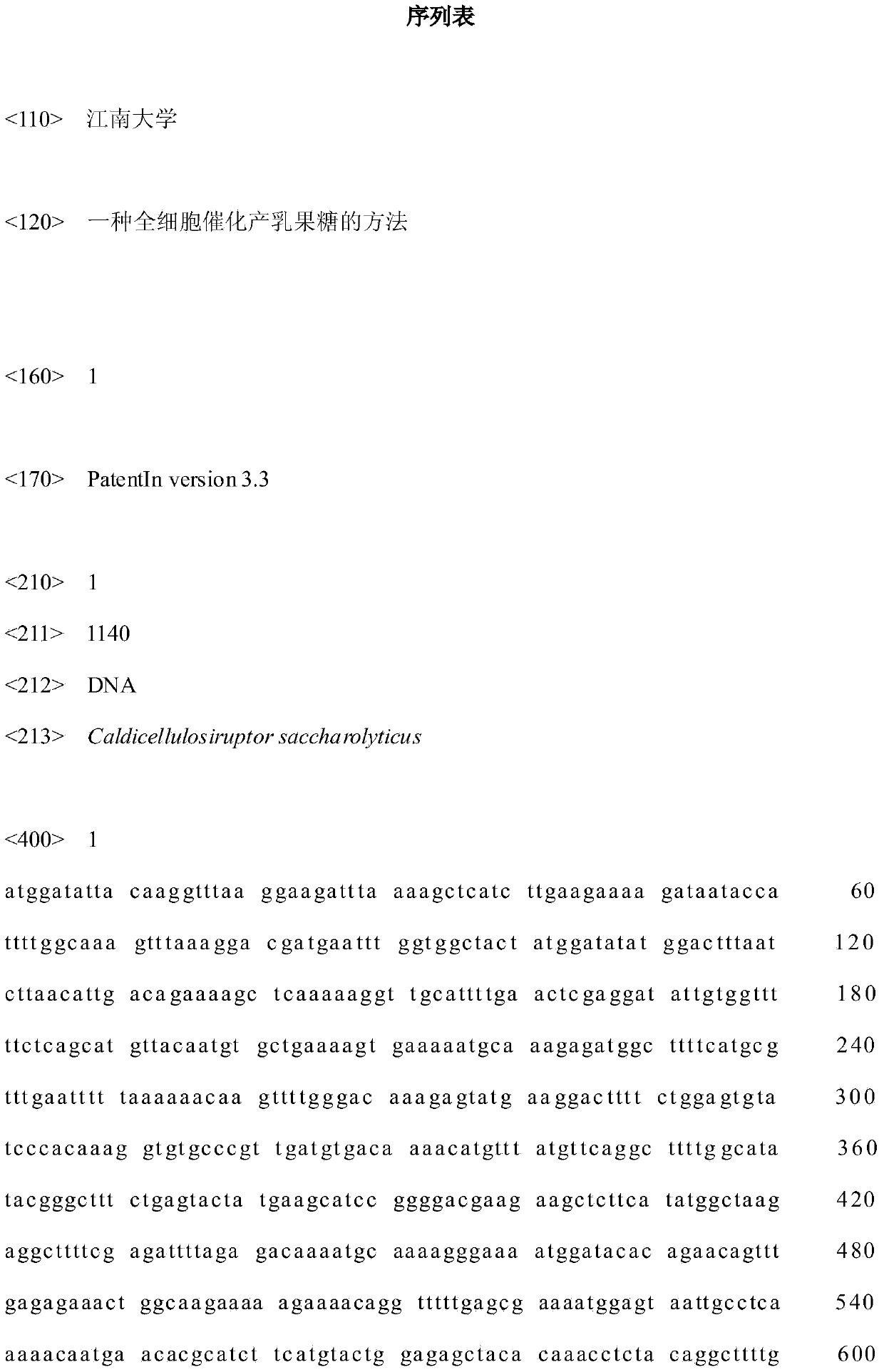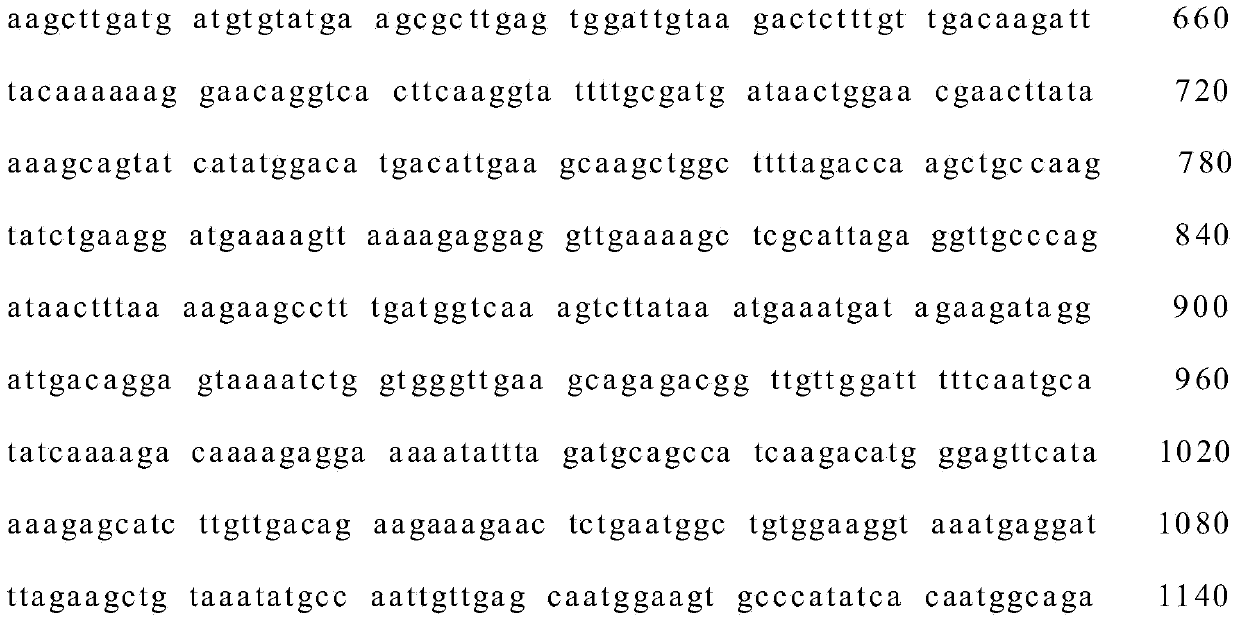Method for producing lactulose through whole-cell catalysis
A technology of lactulose and lactulose, which is applied in the field of whole-cell catalysis to produce lactulose, can solve the problems of food safety hazards and increase the cost of lactulose, and achieve the effects of clean and non-toxic products, promotion of cleanliness, and simple separation and purification process
- Summary
- Abstract
- Description
- Claims
- Application Information
AI Technical Summary
Problems solved by technology
Method used
Image
Examples
Embodiment 1
[0026] The construction conditions of recombinant Escherichia coli E.coli BL21 (DE3) are as follows: the cellobiose epimerase gene is derived from Caldicellulosiruptor saccharolyticus DSM8903, its nucleotide sequence is shown in SEQ ID NO.1, and the host cell is E.coli BL21(DE3), the carrier is pET-28a(+), using IPTG and lactose as inducers to induce enzyme production.
[0027] The recombinant Escherichia coli E.coli BL21 (DE3) producing cellobiose epimerase constructed was fermented and cultivated as a production strain, and the fermentation and cultivation steps were as follows:
[0028] (1) Take the strains in 30% (v / v) glycerol at -80°C, use 1% inoculation amount, 37°C, 200r / min shaker for 12h as the seed culture solution;
[0029](2) Select LB liquid medium for fermentation medium, add 50mL LB liquid medium to a 250mL Erlenmeyer flask, sterilize at 121°C for 20 minutes, add seed culture medium according to 1% inoculation amount after cooling, and add kalamycin to a final ...
Embodiment 2
[0032] In Example 1, the bacterial cells fermented with lactose as an inducer were subjected to vacuum freeze-drying to obtain bacterial powder, and the freeze-dried bacterial powder was directly used as a cell biocatalyst to catalyze the transformation of lactose into lactulose, and the substrate lactose was dissolved in Tris-HCl (pH7. 5) In the buffer solution, the concentration is 600g / L, the amount of bacteria powder added is 12.5U / mL, the reaction temperature is 80°C, and the reaction time is 3h. The lactulose content in the final reaction solution is 251.4g / L, and the lactulose conversion rate reaches 41.9%. .
Embodiment 3
[0034] In Example 1, the bacterial cells fermented with lactose as an inducer were permeabilized with 40% (v / v) ethanol at 4°C for 15 minutes, vacuum freeze-dried to obtain a permeabilized bacterial powder, and the obtained permeable bacterial powder was directly used as a cell The biocatalyst converts lactose to produce lactulose, the substrate lactose concentration is 600g / L, the buffer is Tris-HCl buffer (pH7.5), the reaction temperature is 80°C, the amount of bacteria powder added is 12.5U / mL, the reaction time is 3h, and the final reaction The content of lactulose in the liquid is 310g / L, the conversion rate of lactulose reaches 51.8%, the content of ipilactose is 49g / L, and the conversion rate of ipilactose reaches 8.2%.
PUM
 Login to View More
Login to View More Abstract
Description
Claims
Application Information
 Login to View More
Login to View More - R&D
- Intellectual Property
- Life Sciences
- Materials
- Tech Scout
- Unparalleled Data Quality
- Higher Quality Content
- 60% Fewer Hallucinations
Browse by: Latest US Patents, China's latest patents, Technical Efficacy Thesaurus, Application Domain, Technology Topic, Popular Technical Reports.
© 2025 PatSnap. All rights reserved.Legal|Privacy policy|Modern Slavery Act Transparency Statement|Sitemap|About US| Contact US: help@patsnap.com


